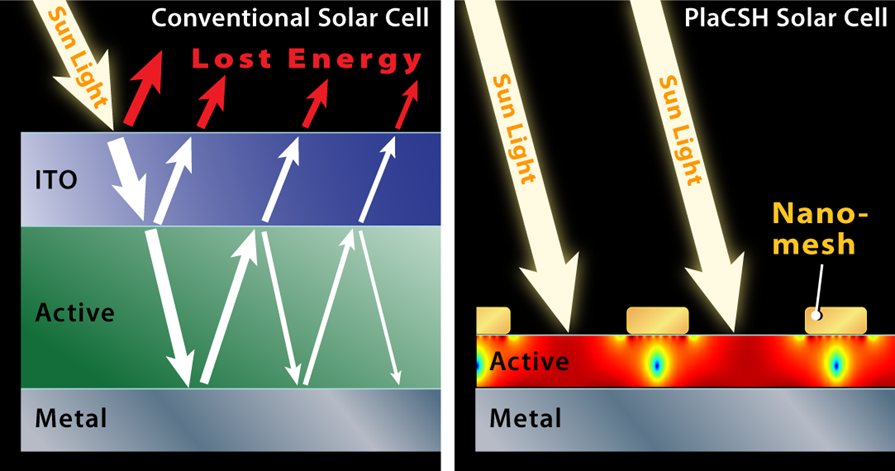Nanotechnology triples solar efficiency


Princeton University recently announced a new nanotechnology that has demonstrated the ability to triple the efficiency of solar cells by eliminating two of the primary reasons why light is reflected or lost. This breakthrough was achieved by applying a "nano-mesh" to plastics, which would make way for inexpensive, flexible devices, or even greatly improve the efficiency of standard photovoltaic panels, the researchers say.
The nano-mesh is designed to dampen reflection and trap light to be converted into electrical energy (existing technologies cannot fully capture light that enters the cell). Only 4 percent of light is reflected, and as much as 96 percent is absorbed, a press release noted. Its overall efficiency in converting light to energy is 52 percent higher than conventional cells in direct sunlight and up to 175 percent greater on cloudy days with less sun.
For reference, North Carolina's Semprius Inc., a Siemens-backed venture, revealed a prototype of what it called the world's best solar efficiency at 33.9 percent earlier this year. Princeton didn't reveal its overall efficiency.
Princeton's findings were first reported in the November 2nd edition of the journal Optics Express, and exceeded the scientists' expectations, according to project lead Dr. Stephen Chou. The research was funded by the Defense Advanced Research Projects Agency, the Office of Naval Research and the National Science Foundation. Chou said that the technology would become even more efficient with more experimentation.
Outside of the lab, U.S. PV maker ecoSolargy has already used nanotechnology to boost solar efficiency by an estimated 35 percent over a 20-year period by filling tiny holes that can accumulate dirt, dust, or water. Other approaches to improve solar efficiency have been inspired by nature.
A team of researchers at the University of Wisconsin-Madison recently created a design that emulates how sunflowers move to maximize light exposure through an adaptation called heliotropism. One could imagine that any combination of these technologies would constitute another leap forward for solar power.
(Illustration by Dimitri Karetnikov/Chou Lab)
Related on SmartPlanet:
- The world's most efficient solar panel
- U.S. manufacturer ships nanotechnology equipped solar cells
- Another record in thin solar efficiency
- New twist on solar panels may low costs, improve efficiency
- The GE, First Solar efficiency battle is on
- Sunflowers - a muse for improving solar power
This post was originally published on Smartplanet.com